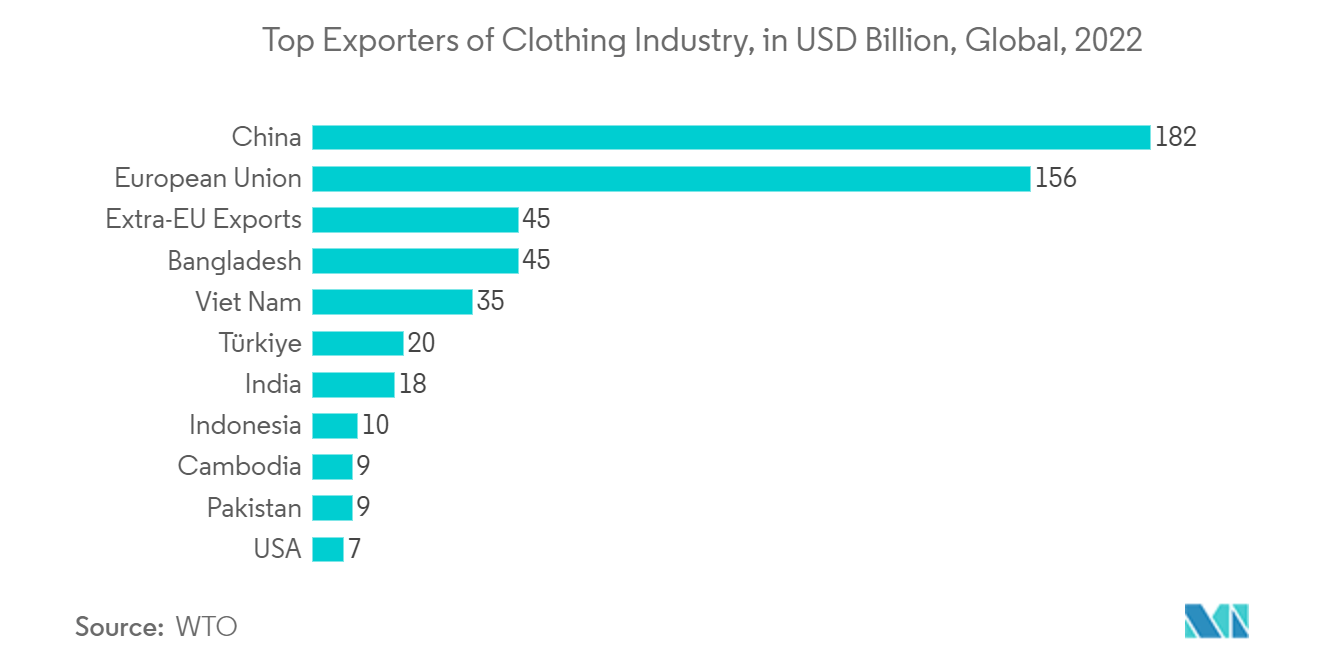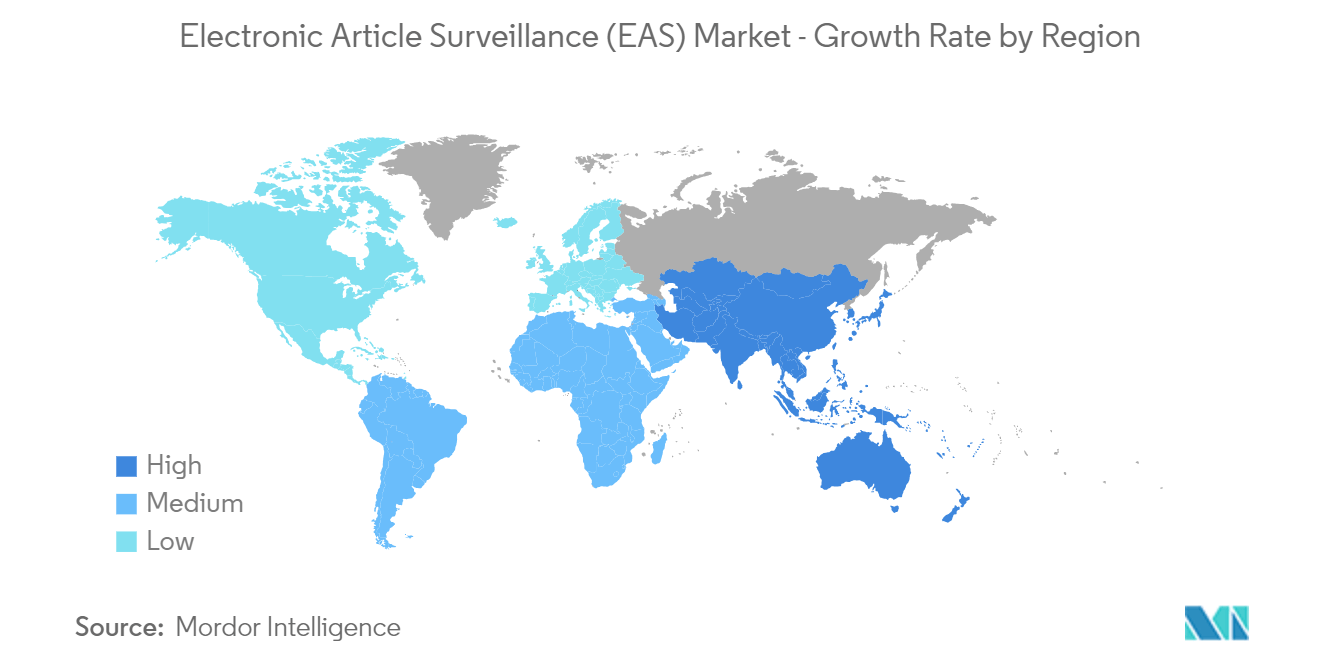Market Trends of Electronic Article Surveillance (EAS) Industry
Clothing and Fashion Accessories to Hold Significant Market Share
- Electronic article surveillance (EAS) helps apparel retailers detect and prevent theft, protecting everything from designer jeans and handbags to leather jackets and shoes. Sensor tags or labels are attached to items and removed or deactivated by staff when items are properly purchased or checked out.
- The integration of EAS into apparel and fashion accessories is driven by related benefits such as ease of use, reduced effort, open merchandising and branding, faster delivery in stores, and better customer experience.
- Merchandise visibility with radio frequency identification (RFID)-based solutions that provide detailed information on the location and quantity of footwear and apparel from source to store to reduce costs inventory, reduce stockouts, and increase sales and profits.
- Clothing is usually secured by using hard security tags available in various shapes with different operating mechanisms and strengths. Each of these factors improves the security of the items.
- For safety considerations, round or shell-shaped labels are recommended as it is less likely to peel off. At the same time, attention is also paid to the size of the pin head to ensure safety. The larger the pinhead, the more difficult it is to pull on clothing without damaging the item and making it unusable due to shoplifting. In addition, ink labels are also used on clothing and can be applied to enhance EAS labels. Ink-dye labels release permanent ink onto clothing if the label is tampered with, ensuring a denial-of-profit strategy.
- An RFID (Radio Frequency Identification) based solution shows exactly how many shoes and clothes are on their way from the factory to the store. This means lower inventory costs, fewer out-of-stocks, and more sales and profits.
- By region, Asia Pacific is projected to grow due to the growing demand for clothing and fashion accessories and the increasing export of fashion goods. According to World Trade Statistical Review 2023, China was the leading exporter of the clothing industry in 2022, with a total export value of USD 182 billion. The export value for Bangladesh and Vietnam was valued at USD 45 billion and USD 35 billion, respectively. The growing export of clothing is expected to drive the retail sales of clothing, which in turn is expected to drive the segment growth.

Asia Pacific to Register Major Growth
- In India's retail industry, luxury shopping is progressively gaining traction. Growing shopping activities have resulted in increased sales for luxury online players as consumers are still trying novel methods to get their hands on luxury and rare things.
- According to the India Brand Equity Foundation (IBEF), India's e-commerce market is expected to reach a value of USD 200 billion by 2026. There is a growing demand for international brands and foreign products among India's digitally connected consumers, leading to high-volume orders for advanced automated warehouses to accommodate the growing volume of general merchandise. An increase in such purchases is expected to boost the market studied.
- In China, among end-user segments, supermarkets and mass merchandise stores account for a significant share of the market. As the number of stores selling clothing and fashion accessories, supermarkets, and mass merchandisers rises, so does the demand for EAS systems. The number of supermarkets and mass merchandise outlets is anticipated to increase as a result of the country's strong economic expansion, improving living standards, rising disposable incomes, increasing consumption, and changing lifestyles.
- In Japan, the market's growth is driven by a growing awareness among retailers and shop owners about the benefits of using EAS antennas, such as protection against inventory loss. This is why several major players are developing sophisticated security systems that offer high stability, an extended range of detection, reduced False alarms, and strong anti-interference capabilities. The market has been given a positive outlook based on this, together with increasing demand for EAS antennas in the healthcare sector.
- In Asia-Pacific, countries such as Bangladesh, South Korea, Singapore, Australia, and Malaysia have a huge opportunity in the electronic article surveillance (EAS) market. The EAS market is anticipated to grow at a significant rate in Asia-Pacific. EAS systems are expected to be in increased demand as the number of retail platforms in the garment, supermarket, and mass merchandise sectors grows.
- The growth in supermarket stores is driving the demand for an advanced EAS system to cater to the increasing cases of shop thefts. In July 2023, Australia-based supermarket chain operator Coles Supermarkets, owned by Coles Group Ltd, announced the expansion of its business in Malaysia through a partnership with Jaya Grocer Holdings Sdn Bhd, introducing a varied collection of 200 products. Such developments are expected to boost the demand for EAS solutions and products in the region.



